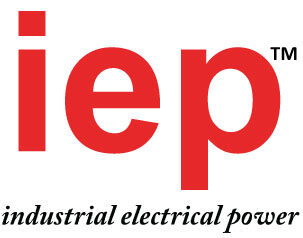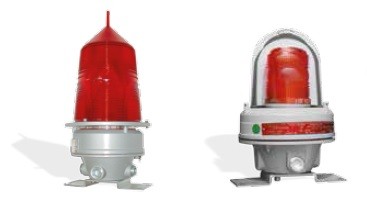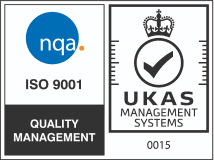Exd Aircraft Warning Lights
IEP, a Malaysia-based industrial electrical power products, provides a variety of explosion proof electrical equipments ranging from Exd, Exde, Exe, Exn, Ex ia Ex p, Ex q, Ex m, etc.
IEP FEAM AWL Aircraft warning lights
Installation: hazardous areas – Zone 1 / 2 (Gases) – Zone 21 / 22 (Dusts)
Classification: Group II – Category 2G 2D
REFERENCE STANDARDS
Directive 94/9/EC (until April 19th, 2016) – Directive 2014/34/EU (from April 20th, 2016)
EXECUTION:
II 2 G Ex d IIC T4/T6 Gb
II 2 D Ex tb IIIC T135°/T85°CC Db
RULES OF COMPLIANCE: EN/IEC 60079-0; EN/IEC 60079-1; EN/IEC 60079-31;
EC Type-Examination Certificate: INERIS 01 ATEX 0054X
PROTECTION DEGREE: IP66
AMBIENT TEMPERATURE: -60°C ÷ +60°C
OTHER AVAILABLE CERTIFICATES:
IECEx: IECEx INE 13.0075X
INMETRO: CEPEL 14.2311X
EAC: TC RU C-IT.ГБ08.В.01342
RINA: ELE18111CS_015
RUSSIAN MARINE CERTIFICATE (RMRS): 13.03516.315
Mechanical characteristics
Body: Marine grade copper free aluminium
Globe: High-temperature resistant borosylicate glass
Fresnel len: Shock proof acrilyc material suitable for high temperatures
Painting: External epoxy powders grey RAL-9006 colour
Screws: External stainless steel
Gaskets: Silicon rubber
Cable entry: 3/4″ NPT size threaded
Electrical characteristics
Lamp holders: Porcelain e27 size
Internal wiring: High-temperature resistant silicon rubber insulation cables
Terminals: Suitable up to 4mm/sq cables
Medium intensity: Flashing obstruction light 1450 / 2000 cd intensity (over than 45mt distance)
Low intensity: Steady obstruction light 30 cd intensity (less than 45mt distance)
Construction: single awl – twin awl (1 main + 1 spare) in according to ICAO directive
On request accessories:
- Galvanized steel wire protection guard
- Stainless steel wire protection guard
- Aircraft Warning Lights and control panel support manufactured in according to customer specification
- External painting colour on request
- Threaded cable entry different than standard
- Xenoflash 6J lamp
- Electronic with voltage supply different than standard
IEP FEAM MIOL-LIOL Medium intensity and low intensity multi LED system aircraft warning lights
Installation: hazardous areas – Zone 1 / 2 (Gases) – Zone 21 / 22 (Dusts) – Safe area
Classification: Group II – Category 2G 2D
REFERENCE STANDARDS
Directive 94/9/EC (until April 19th, 2016) – Directive 2014/34/EU (from April 20th, 2016)
EXECUTION:
II 2 G Ex d IIC T6 / T5 Gb
II 2 D Ex tb IIIC T85°C / T100°C Db
RULES OF COMPLIANCE: EN/IEC 60079-0; EN/IEC 60079-1; EN/IEC 60079-31
EC Type-Examination Certificate: INERIS 01 ATEX 0054X
PROTECTION DEGREE: IP66
AMBIENT TEMPERATURE: -60°C ÷ +60°C
OTHER AVAILABLE CERTIFICATES:
IECEx: IECEx INE 13.0075X
INMETRO: CEPEL 14.2311X
EAC: TC RU C-IT.ГБ08.В.01342
RINA: ELE18111CS_015
RUSSIAN MARINE CERTIFICATE (RMRS): 13.03516.315
INTERNATIONAL REGULATIONS COMPLIANCY FOR VISUAL AIDS
ICAO International Standards and Recommended Practices:
Aerodromes – Annex 14 – Volume 1 – 4th Edition (November 2004)
Charapter 6: Medium Intensity Type A-B-C Flashing – Steady burning obstacle light MIOL-A / MIOL-B / MIOL-C
Charapter 6: Low Intensity Type A-B Steady burning obstacle light LIOL-A / LIOL-B
FAA Advisor Circular AC150/5345-43F E.B.#67 – Lamp type MIOL-A / MIOL-B / MIOL-C / LIOL-A / LIOL-B
Mechanical characteristics
Body: Marine grade copper free aluminium
Globe:
High-temperature resistant borosylicate glass (zone 1/2 – 21/22 version)
Transparent polycarbonate u/v resistant (safe area version)
Painting: External epoxy powders grey ral-9006 colour
Screws: External stainless steel
Gaskets: Silicon rubber
Cable entry: 3/4″ NPT size threaded
Electrical characteristics
LEDs: separate groups with individual led protection system – LED technology stalilized by constant current generator
Consumption: LIOL-B = 8W (single and dual) / MIOL-B = 35W (single) – 70W (dual)
Medium intensity (MIOL): Flashing light with intensity 2000 cd (+/-25%) flashing 40 flash/minute
Low intensity (LIOL): Steady burning with intensity 10/32 cd
Realization: Single group leds system with own reflector dual groups leds system, each group with own reflector (1 main + 1 reserve)
Optical characteristics
Horizontal beam radiation: 360° (MIOL / LIOL)
Vertical beam radiation: LIOL = between 5° and 10° / MIOL = 3°
Efficiency: > 91% – pfc factor 0,99
Expectancy life: Long life time – more than 10 years
Apply to: Flare – Airport – Stacks – High buildings – Chimneys – Tower crane – Pipelines – Bridges – Radio and Television towers Transmission lines – Wind turbines – Radar – and so on
On request accessories:
- Stainless steel wire protection guard
- Aircraft Warning Lights and control panel support manufactured in according to customer specification
- External painting colour on request
- Threaded cable entry different than standard
- Control panel with simultaneous or catenary multilight flashing system
MIOL – LIOL
Main rules for aircraft warning lights
MAIN RULES FOR VISUAL AIDS
ICAO Annex 14 – Aerodromes Vol. 1 – Chapter 6 / 10 (July 2004)
- The marking and/or lighting of obstacles is intended to reduce hazards to aircraft by indicating the presence of the obstacles
(ICAO: Aerodromes – Annex 14 – Vol. 1 – Ch. 6.1) - Marking (red-orange/white painting) is used for day time
- Marking may be omitted when the obstacle is lighted
- A fixed obstacle above a horizontal surface should be marked and, if the aerodrome is used at night, lighted.
(ICAO: Aerodromes – Annex 14 – Vol. 1 – Ch. 6.1.4) - A system of preventive maintenance of visual aids shall be employed to ensure lighting and marking system reliability.
(ICAO: Aerodromes – Annex 14 – Vol. 1 – Ch. 10.4.2) - The reliability of installed lighting equipment should not less than one year.
(ICAO: Aerodromes – Annex 14 – Vol. 1 – Ch. 10.4.6) - The number and arrangement of Low, Medium or High Intensity Obstacle Lights , at each level to be marked, shall be such that the object is indicated from every angle in azimuth
- Where a light is shielded in any direction by another, additional light shall be provided
(ICAO: Aerodromes – Annex 14 – Vol. 1 – Ch. 6.3.22) - The number of lights needed for each level depends on the outside diameter of the obstacle
- The top lights should be placed sufficiently below the top, so as to minimize contamination by smoke, powders, and so on.
(ICAO: Aerodromes – Annex 14 – Vol. 1 – Ch. 6.3.12)
AWL TYPES (Aircraft Warning Lights)
LIOL-A / B Low Intensity Obstacle Lights on fixed objects, Type-A / Type-B, shall be steady burning RED lights
(ICAO: Aerodromes – Annex 14 – Vol. 1 – Ch. 6.3.23)
MIOL-A Medium Intensity Obstacle Lights on fixed objects, Type-A , shall be flashing WHITE lights
MIOL-B Medium Intensity Obstacle Lights on fixed objects, Type-B , shall be flashing RED lights
MIOL-C Medium Intensity Obstacle Lights on fixed objects, Type-C , shall be steady burning RED lights
(ICAO: Aerodromes – Annex 14 – Vol. 1 – Ch. 6.3.30)
MIOL-A / MIOL-B Medium Intensity Obstacle Lights Type-A / Type-B, located on an obstacle, shall be flash simultaneously
(ICA: Aerodromes – Annex 14 – Vol. 1 – Ch. 6.3.32)
HIOL-A / B High Intensity Obstacle Lights on fixed objects, Type-A / Type-B, shall be flashing WHITE lights
(ICAO: Aerodromes – Annex 14 – Vol. 1 – Ch. 6.3.33)
HIOL-A High Intensity Obstacle Lights Type-A, located on an obstacle, shall be flash simultaneously
(ICAO: Aerodromes – Annex 14 – Vol. 1 – Ch. 6.3.35)
HIOL-B High Intensity Obstacle Lights Type-B, indicating the presence of tower supporting overhead wires, an others.. shall be flash sequentially
(ICAO: Aerodromes – Annex 14 – Vol. 1 – Ch. 6.3.36)



